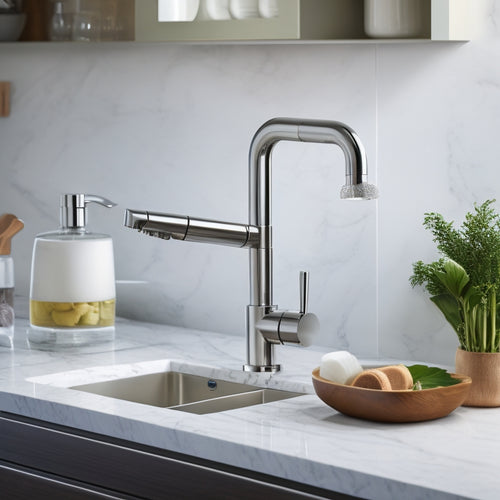
Master the Art of Paint Organization
Share
I've mastered the art of paint organization, and it's revolutionized my creative workflow. I started by gathering essential supplies like quart-sized paint cans, stirrers, and a printer for labeling. Then, I sorted my paints, getting rid of old or unnecessary ones, and assigned a dedicated space for storage. I also created a system for color coordination, noting undertones and shades for a cohesive look. Now, my paints are neatly labeled, easily accessible, and safe from heat and expiration. By implementing these strategies, I've reduced clutter, saved money, and boosted productivity. Now, I can focus on what matters most - creating.
Key Takeaways
• Sort and purge your paint collection to eliminate duplicates, expired, and unwanted paints, and consider donating or repurposing leftovers.
• Utilize a labeling system with printable stickers and a printer to accurately identify paint colors, types, and dates for easy retrieval.
• Designate a well-ventilated storage area with compact shelving units to keep paints organized, visible, and protected from heat sources.
• Implement a color coordination system by gathering swatches, noting undertones and shades, and matching colors with room design for a cohesive look.
• Establish a routine to regularly check expiration dates, maintain a clean workspace, and responsibly dispose of old paints to ensure a safe and organized environment.
Paint Storage and Supplies
I've found that having the right paint storage supplies on hand is essential to maintaining an organized and functional paint collection. This includes quart-sized paint cans, different paint stirrers for each color, and a printer for creating labels.
Labeling techniques, such as using printable white sticker paper, help me easily identify the contents of each can. Proper storage solutions, like compact shelving units, keep my paints organized and within reach.
When it's time to dispose of old paint, I make sure to follow responsible paint can recycling and disposal methods to minimize environmental impact. By having the right supplies and following safe practices, I can make certain my paint collection remains organized, functional, and safe.
Organizing Your Paint Collection
To guarantee the organization of my paint collection, I gather all the paints in the house, sorting through them to decide which ones to donate, throw away, or consolidate into quart-sized cans. This helps me declutter and identify which paints I truly need.
Next, I utilize labeling techniques, such as printable stickers, to clearly identify each paint can's contents, including color schemes. I also repurpose old paint cans by cleaning and relabeling them for storage. By doing so, I create a functional storage solution that keeps my paints organized and easily accessible.
This system assures I can quickly find the right paint for future projects, and it's a great way to maintain a safe and organized workspace.
Color Coordination and Info
With my paints organized and easily accessible, I can now focus on coordinating their colors with my home decor, guaranteeing a harmonious and visually appealing atmosphere.
I start by gathering paint color swatches and matching them with my room design. This helps me to pinpoint the perfect paint color schemes that complement my decor coordination.
I also take note of the undertones and shades of each color to achieve a cohesive look. By doing so, I can create a beautiful and harmonious space that reflects my personal style.
With my paints organized and color-coordinated, I'm confident that my next painting project will turn out stunning and stress-free.
Safety and Storage Essentials
Regularly, I double-check my paint storage to make sure that I'm adhering to essential safety measures and guidelines, which helps me prevent accidents and maintain the quality of my paints. I prioritize storage precautions, making certain that my paints are kept away from heat sources, direct sunlight, and moisture. This prevents the paint from drying out, becoming contaminated, or igniting.
| Safety Measure | Reason |
|---|---|
| Store in well-ventilated areas | Prevents inhaling harmful fumes |
| Keep away from heat sources | Prevents paint from igniting |
| Label paints accurately | Ensures proper disposal methods |
| Check expiration dates | Maintains paint quality |
| Dispose of old paint responsibly | Protects the environment |
Benefits of Paint Organization
As I maintain my organized paint storage system, I've noticed a significant reduction in clutter and a boost in productivity, making it easier to focus on my painting projects.
With everything neatly labeled and stored, I can quickly find the paint I need, reducing the likelihood of buying duplicates and saving me money in the long run.
Plus, I've received great feedback from readers who've implemented similar systems, sharing their own success stories and appreciation for the printable labels.
By keeping my paints organized, I'm also extending their longevity and ensuring proper disposal when they're no longer usable.
It's amazing how something as simple as paint organization can have such a significant impact on my creative workflow and the environment.
Common Paint Storage Challenges
I've encountered several frustrating issues while storing paint, including difficulty locating specific cans and a lack of labeling that leads to confusion. These problems can be overwhelming, especially when you're in the middle of a project and can't find the right color.
| Challenge | Impact |
|---|---|
| Difficulty locating specific cans | Delays and frustration |
| Lack of labeling | Confusion and mistakes |
| Overaccumulation of paint cans | Clutter and disorganization |
| Inadequate storage solutions | Paint damage and waste |
| Poor inventory management | Duplicated purchases and waste |
To overcome these challenges, it's essential to implement effective labeling solutions, storage solutions, and inventory management strategies. By optimizing space and organizing your paint collection, you can reduce clutter, save time, and ensure a smoother painting experience.
Maintenance and Storage Tips
To guarantee my paint collection remains organized and functional, I make it a habit to clean storage containers before use, checking for leaks or damage and tightening lids securely. This maintenance routine ensures my paint quality remains excellent and prevents any accidents.
I also prioritize label maintenance, making sure each can is accurately labeled with its color and type. This not only saves me time when searching for a specific paint but also helps me avoid duplicating purchases.
Efficient storage is key, so I optimize my space by using compact containers and maximizing vertical storage. By following these maintenance and storage tips, I can enjoy a clutter-free space and focus on my next creative project.
Frequently Asked Questions
Can I Use Old Paint Cans for Other Storage Purposes?
As I envision a clutter-free space, I wonder if I can repurpose old paint cans for storing craft supplies or DIY decorations. Yes, I can - safely and creatively, by thoroughly cleaning and disinfecting them first!
How Do I Restore Dried-Out Paint to Its Original Consistency?
I've successfully revived dried-out paint by adding a small amount of water or paint thinner, stirring well, and applying thin, fresh coats, allowing each layer to dry before reapplying, consequently restoring the paint to its original consistency.
Are There Eco-Friendly Paint Storage Container Options Available?
When seeking eco-friendly paint storage, I opt for containers made from sustainable materials or recycled containers, ensuring a reduced carbon footprint while keeping my paints organized and protected.
Can I Store Paint in a Basement or Attic With High Humidity?
"Ah, storing paint in a humid basement or attic? Sounds like a recipe for moldy disaster! I'd advise against it, unless you're a mold enthusiast. Instead, prioritize humidity control and mold prevention to keep your paint fresh and safe."
Do I Need to Prime a Surface Before Applying Leftover Paint?
Before using leftover paint, I always verify if the surface needs priming to guarantee a smooth finish and proper adhesion, considering surface preparation and paint compatibility to avoid peeling or flaking.
Related Posts
-

Affordable Amazon Home Improvement Must-Haves
You're one step away from a more organized, stylish, and functional living space! Start with must-haves like mDesign'...
-

Community Engagement: Learning Through Professions
Community engagement is a powerful tool for fostering a deeper understanding of various professions among children. B...
-

Revolutionize Your Kitchen Sink With Must-Haves
Elevate your kitchen sink experience with must-have essentials that prioritize organization, efficiency, and style. S...


